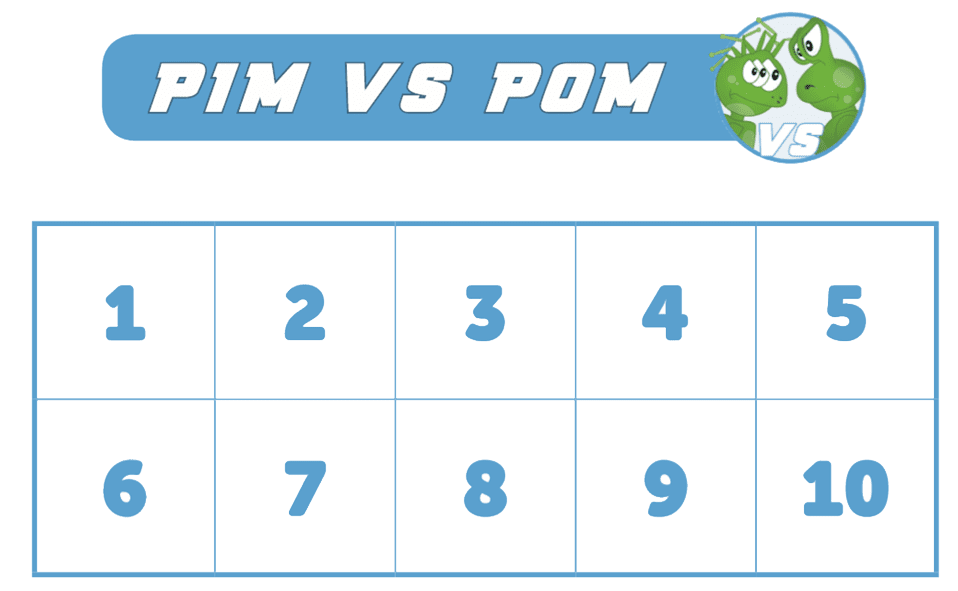Pim vs Pom
The Rules
- Copy out this simple number grid from 1 to 10 as your playing board.
- Take turns to count forward with one shared counter!
- Players can choose to count on either 1, 2 or 3 steps, with each player continuing where their opponent ended.
- Players should be encouraged to say the numbers that they land on e.g. “I am going to count on 3 from 6…7,8,9!”
- The winner is the person who actually lands on 10.

Try these variations to deepen children’s understanding of the part of the number system they are learning to count in. Combining variations will take your teacher questioning even deeper and the children’s thinking even deeper!
- Change how the number of jumps is selected e.g. chosen at random (using a spinner, dice etc.), by the player, or by the opponent.
- Use number lines in context e.g. ruler, measuring scale, clock face, money.
- Swap ‘the thing’ to an every day object using Pim, e.g. play with eggs in an egg box.
- Start on 10 and make backwards jumps to zero!
- Swap ‘the thing’ to a place value quantity using Pim, e.g. bars of 10 on 100 square.
- Use sections of the number line e.g. 35 to 55 or 1.5 to 2.
- Change the length of the number line e.g. 0 to 20, 0 to 100.
- Vary place value of jumps e.g. 100, 200, 300 or 0.01, 0.02, 0.03
- Change the vocabulary that must be used e.g. ‘count on’, ‘jump forward’, ‘add’, ‘increase by’ etc.
- Play with each step on the Counting Along in 4 Ways Progress Drive.
- Vary the winning number, e.g. play to 9.
- Use array representation instead of a number line e.g. show numbers 0 to 10 and place counters to show jumps.
Once children are familiar with playing Pim vs Pom it becomes an ideal independent learning activity. Children assume the role of Pim or Pom when they play each other, so keep a score of who wins the most games over time, Pim or Pom?
